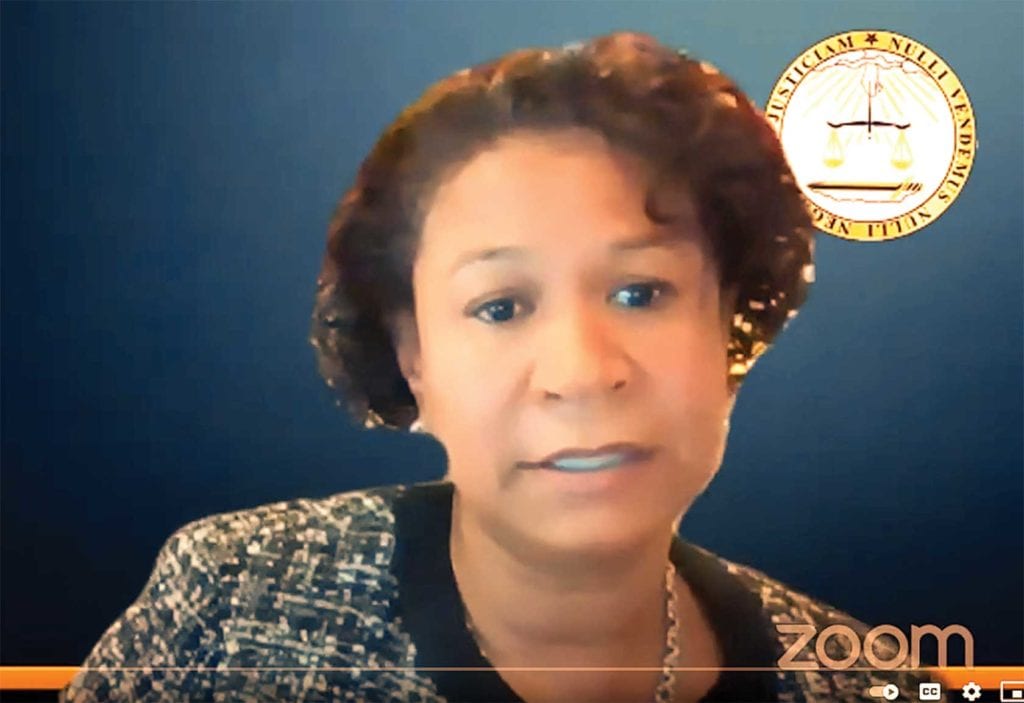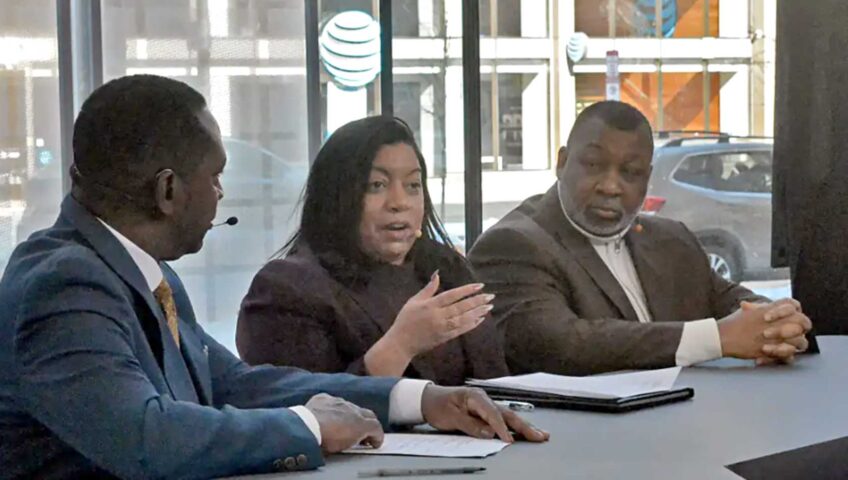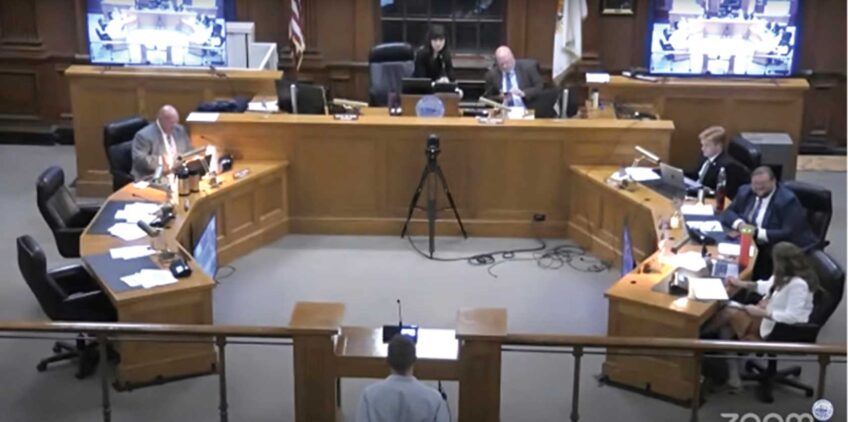Officials take on discrimination in court system
Reports find disparate treatment, outcomes in Mass. judicial system

It was a scenario painfully familiar to Black and Latino lawyers and judges working in the Massachusetts court system. Superior Court Judge Angel Kelley, filling in for another jurist in a small community court, pulled into a parking space reserved for judges.
“Someone drove up to my car, waving, cussing and carrying on,” Kelley told the Banner. “Our windows were up, so there was no direct communication, but is was very unkind. Very unfriendly.”
While the woman who accosted Kelley later apologized, the incident was far from an outlier in the experiences of people of color interacting with the Massachusetts court system.
Kelly and others in the state’s court system described their experiences during a forum, “Confronting Racism in the Court System,” held last week via Zoom.
The forum coincided with the release of a report from the Supreme Judicial Court’s Standing Committee on Lawyer Well-Being summarizing the findings of meetings with affinity bar associations, groups that represent traditionally marginalized groups in the law field.
“The summary describes how attorneys of color and those from other historically excluded populations often experience increased scrutiny, unfair assumptions, insults to their professional identity and integrity, and sometimes their personhood, from the moment they set foot in a court building,” noted SJC Chief Justice Kimberly Budd.
The forum also comes on the heels of an October 2020 Harvard Law School Criminal Justice Policy Program report commissioned by the Massachusetts Trial Court detailing racial disparities in the criminal justice system. The report found that Black and Latino people face disparate treatment at virtually every stage of the criminal justice process, from being charged by police to sentencing.
The Harvard Law study found that Blacks are sentenced to incarceration at a rate 7.9 times higher than whites, and Latinos are sentenced at a rate 4.9 times higher than whites. Among those sentenced to incarceration, Blacks, on average, serve sentences 168 days longer than whites; Latinos serve 148 days longer than whites.
While the report did not analyze arrest data from Massachusetts police departments, its authors attribute much of the disparity in sentencing to the fact, borne out in previous studies, that Black and Latino people are more likely to be stopped, searched and arrested by police — disparities studies have shown to be more consistent with racial bias than differences in criminal conduct.
“Our analysis shows that one factor — racial and ethnic differences in the type and severity of initial charge — accounts for over 70 percent of the disparities in sentence length,” the Harvard report reads.
Trial Court Chief Justice Paula Carey said the focus court officials are now putting on disparities at all levels of the judicial system is an important step at bringing equity to the system.
“The only way we’re really going to move the needle is that we’ve got to work together,” Carey told the Banner.
She noted that many of the crimes police charge suspects with carry mandatory-minimum sentences that prevent judges from exercising discretion. Changing such laws requires action from the Legislature.
Changing the way suspects are charged and the mandatory minimum sentences they often face will require collective action, Carey noted. She cited the Massachusetts Justice Reinvestment Working Group appointed by legislative leaders and the governor to analyze racial disparities in state government.
“They have been charged with pulling the data together so that all state agencies and state criminal justice partners are collecting the same data, so that we can use that data and begin to make policy decisions,” Carey said.
Focusing on bias inside court houses, the Executive Office of the Massachusetts Trial Court held listening sessions with members of affinity bar groups, including the Massachusetts Black Lawyers Association and the Massachusetts Association of Hispanic Attorneys, to examine ways to combat bias in the system.
Carey cited a Supreme Judicial Court 2019 Lawyer Wellness Report that, among other findings, concluded that “women, LGBTQ lawyers and lawyers of color experience stress, isolation, pressure to ‘overperform,’ and the effects of discrimination and bias throughout their careers.”
Roxbury attorney Jose Lopez, a former president of the Massachusetts Association of Hispanic Attorneys, told the Banner he has contended with bias throughout his career.
“Court officials questioning whether I’m actually an attorney — that happens often,” he said. “I’ve had judges question my veracity and give more trust to opposing counsel who are white. That’s not out of the norm. It takes a lot of concerted effort to make sure I’m recognized as an attorney.”
Carey said she distributed the lawyer wellness report to every court official, asking them to read and reflect on it. The Massachusetts Trial Court established a hotline to solicit ways to improve the system, and the department releases annual diversity reports detailing, among other things, the number of people hired and promoted, broken out by race, ethnicity and gender.
In all, 26% of the Trial Court’s employees are people of color, compared to 21% of the state’s workforce. Representation of people of color in various occupations ranges from 11% of justices to 43% of maintenance staff to 30% of probation officers. People of color are particularly underrepresented among clerks magistrate, just 5% of whom are people of color.
Courts now hold mandatory trainings during which officials are taught how to recognize their implicit biases and recognize ways in which people are discriminated against in the court system.
“All members of the team who have the role and responsibility for the advancement of the administration of justice are in a room training together,” Chief Diversity Officer in the Trial Massachusetts Court John Liang said of the sessions, which he said have been delivered in 86 court houses in the state. “This is a program that really gets the entire office into an understanding of the impacts of their words and actions, in a way that we can get people engaged in conversations with each other.”
Carey said the Trial Court, by working with staff, affinity groups and other community members, has made progress in addressing the disparities in the state’s criminal justice system.
Moving forward, she says, the collaborative approach is what will likely effect positive change.
“The only way we’re really going to move the needle is that we’ve got to work together,” she said. “Lots of different people, including the court system, play a part in that.”









